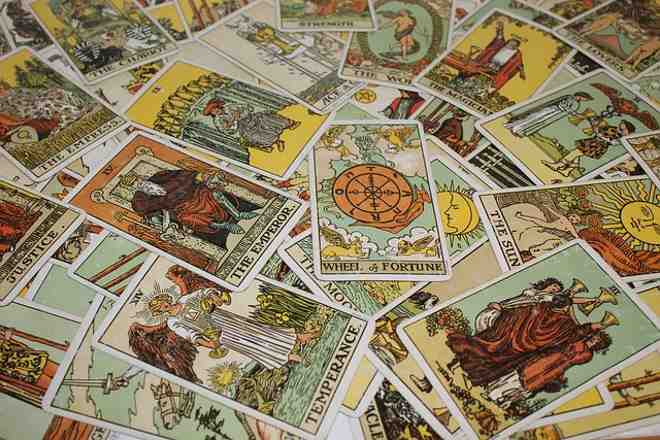Exploring Tarot: How Card Readings Can Offer Personal Insight and Reflection
Tarot reading has grown in popularity as a tool for self-reflection and gaining perspective on life’s questions. While it doesn’t predict the future, many find that tarot sessions help them pause, reflect, and think more clearly about their current situations. This article explains how tarot works, what to expect from a reading, and how it can support mindful decision-making — all in an open and grounded way.

What exactly is tarot and how does it work?
Tarot is a deck of 78 cards, each with its own symbolic imagery and meaning. The deck is divided into two main parts: the Major Arcana (22 cards representing significant life events or archetypal themes) and the Minor Arcana (56 cards divided into four suits, similar to playing cards). During a tarot reading, cards are drawn and interpreted to provide insight into a person’s life, emotions, or specific questions they may have.
The process of how tarot readings work involves shuffling the deck while focusing on a question or area of concern. The reader then lays out the cards in a specific pattern, known as a spread. Each position in the spread represents a different aspect of the question or situation. The reader interprets the cards based on their traditional meanings, the position in the spread, and their intuitive insights.
How can tarot be used as a self-reflection tool?
Tarot as a self-reflection tool offers a unique way to gain perspective on personal issues and life challenges. The imagery and symbolism in the cards can trigger insights and prompt deeper thinking about one’s situation. By reflecting on the cards drawn and their potential meanings, individuals can explore their subconscious thoughts, feelings, and motivations.
Using tarot for self-reflection often involves regular practice, such as drawing a card each day and journaling about its potential significance. This practice can help develop self-awareness, encourage mindfulness, and provide a structure for contemplating life’s complexities. The cards serve as prompts for introspection, allowing individuals to consider different viewpoints and potential outcomes they might not have otherwise considered.
What can one expect during a tarot reading session?
A typical tarot reading session begins with the reader asking the client to focus on a question or area of their life they’d like insight into. The reader will then shuffle the deck and lay out the cards in a specific pattern. Throughout the session, the reader interprets the cards’ meanings in relation to the client’s question or situation.
What to expect during a reading varies depending on the reader’s style and the client’s preferences. Some readers provide detailed interpretations, while others encourage the client to participate in the interpretation process. A session usually lasts between 30 minutes to an hour and may involve discussion and reflection on the insights gained from the cards.
It’s important to note that ethical readers will emphasize that tarot is a tool for guidance and self-reflection, not fortune-telling. They should create a comfortable, non-judgmental atmosphere and respect the client’s privacy and personal boundaries.
What are some common tarot card meanings?
While each tarot deck may have slight variations, there are some commonly recognized meanings for many cards. For example:
-
The Fool: New beginnings, innocence, spontaneity
-
The Lovers: Relationships, choices, harmony
-
The Tower: Sudden change, upheaval, revelation
-
The Sun: Joy, success, vitality
-
Death: Transformation, endings, change
In the Minor Arcana:
-
Cups generally relate to emotions and relationships
-
Pentacles often represent material and financial matters
-
Swords typically symbolize intellect and conflict
-
Wands usually signify creativity and passion
It’s important to remember that these meanings are not fixed and can vary based on the context of the reading, the surrounding cards, and the reader’s intuition.
How does intuition play a role in tarot interpretation?
The role of intuition in tarot is crucial to the reading process. While tarot cards have traditional meanings, skilled readers blend these meanings with their intuitive insights to provide a more personalized and nuanced interpretation. Intuition in tarot reading involves picking up on subtle cues, making connections between cards, and sensing underlying themes that may not be immediately apparent.
Readers often describe experiencing a “gut feeling” or sudden realizations when interpreting cards. This intuitive process can help bridge the gap between the symbolic language of tarot and the specific circumstances of the client’s life. As readers gain experience, they often develop a stronger connection to their intuitive abilities, enhancing the depth and accuracy of their interpretations.
Are there different types of tarot decks and reading styles?
Yes, there is a wide variety of tarot decks available, each with its own artistic style and sometimes slightly different interpretations of the traditional card meanings. The most well-known deck is the Rider-Waite-Smith deck, which serves as the basis for many modern interpretations. Other popular decks include the Thoth Tarot, the Wild Unknown, and numerous themed decks that incorporate various cultural, mythological, or artistic elements.
Reading styles can also vary significantly. Some common approaches include:
-
Celtic Cross: A 10-card spread that provides a comprehensive overview of a situation
-
Three-Card Spread: A simple spread often used for past-present-future readings or to analyze a specific situation
-
Intuitive Reading: Where the reader lays out cards without a fixed spread, guided by their intuition
-
Interactive Reading: Involving the client in the interpretation process, encouraging them to share their thoughts on the cards
Tarot reading offers a unique tool for personal growth and self-reflection. While it doesn’t predict the future, many find value in its ability to provide new perspectives and encourage deeper thinking about life’s challenges. Whether used in professional readings or as a personal practice, tarot can be a powerful aid in navigating life’s complexities and fostering self-awareness.




